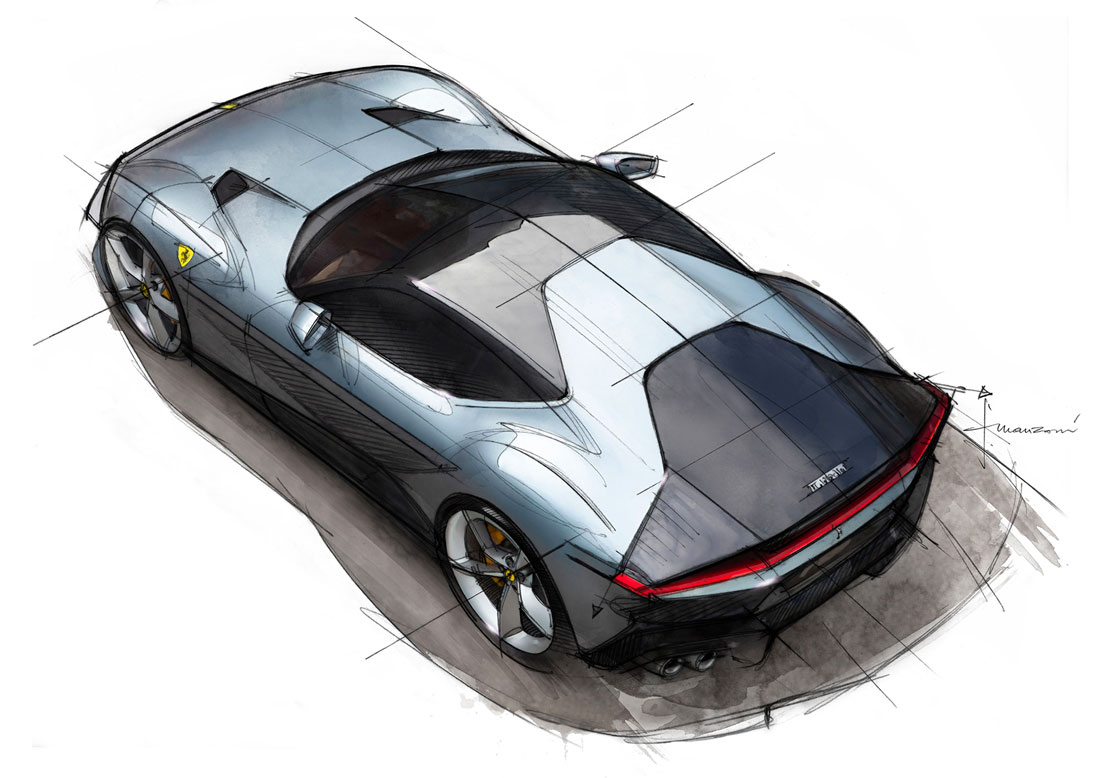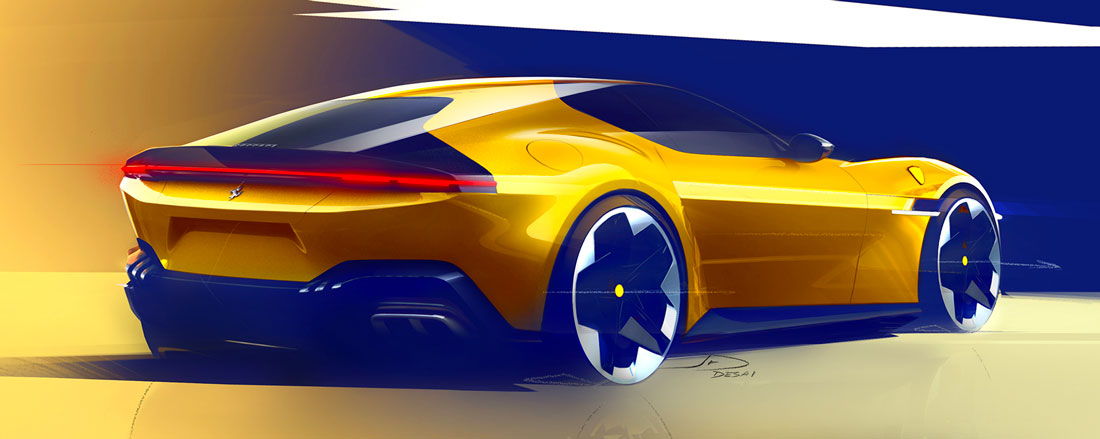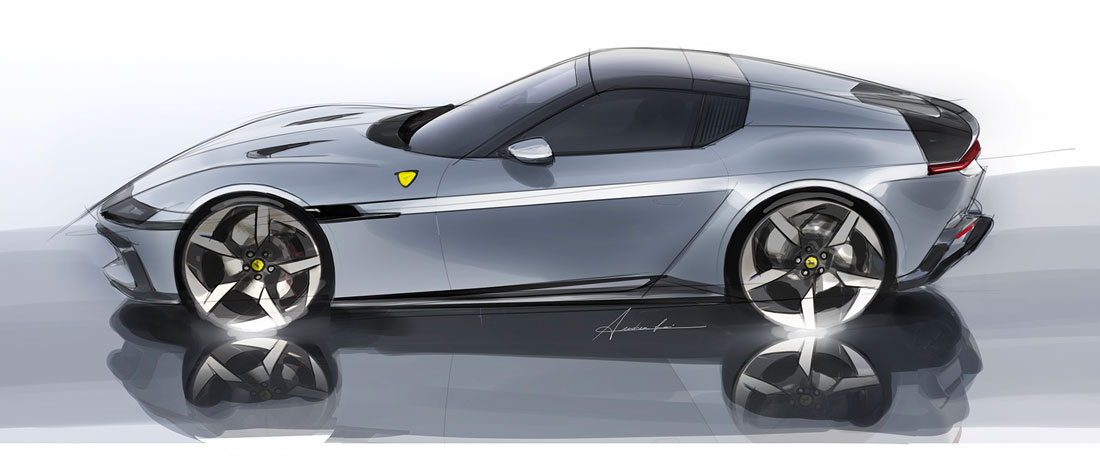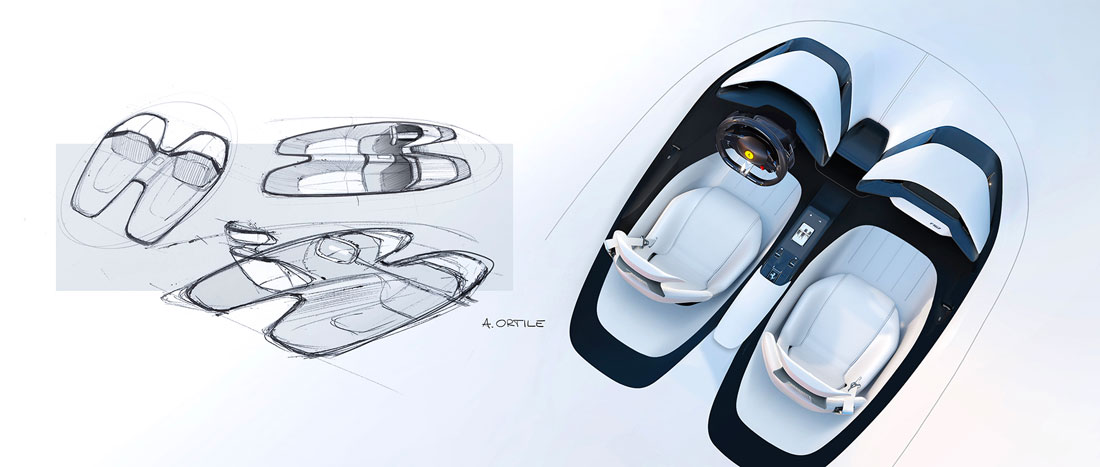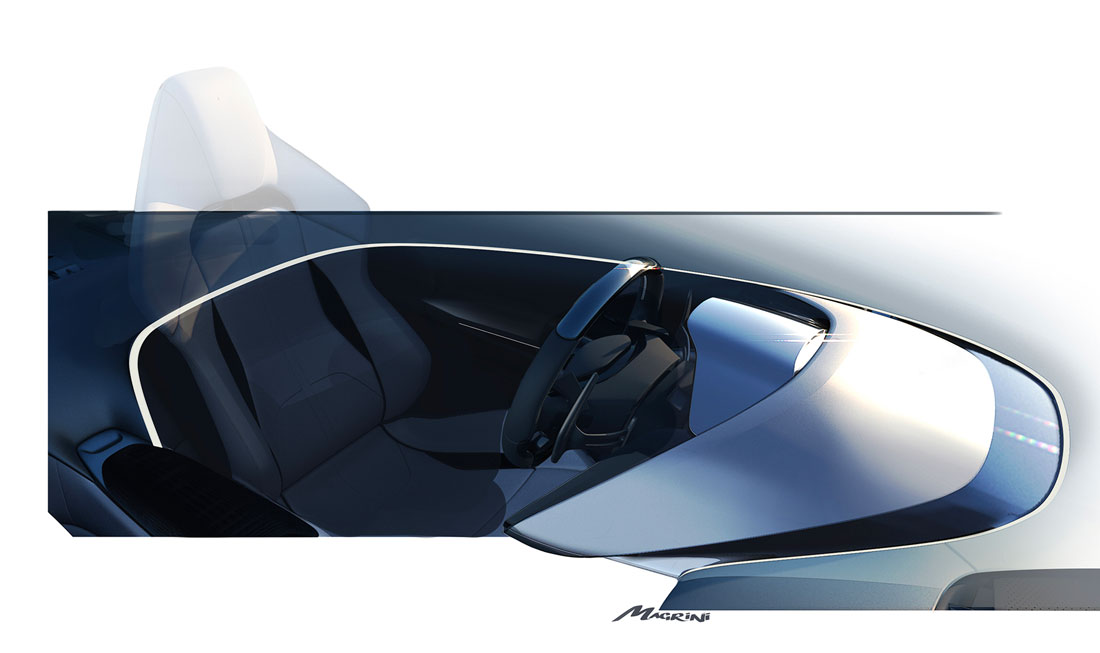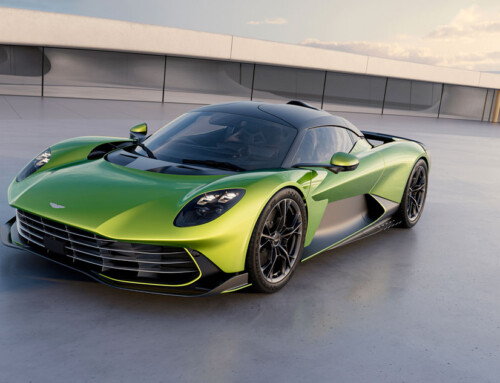Since 1947, a common thread has ignited the passion of Ferraristi: the V12 engine. The stuff of legends, the very essence of Ferrari, or in the words of Enzo Ferrari himself: “Our engine par excellence, the one we were born with and which defines us”. This was the genesis of the 12Cilindri, a super sports car whose name resonates with history: “Is there any better way to celebrate a legend than to dedicate a new model to it?”, muses Flavio Manzoni, head of Ferrari design since 2010 and creator of more than 60 Reds that we meet up with at the Ferrari style centre.
Looking to the future
With its two seats, front mid-engine, and rear-wheel drive, the 12Cilindri carries the torch of the Ferrari Gran Turismos of the 1950s and 1960s, but has its gaze fixed firmly on tomorrow also: “It would be a mistake to just keep talking about the past. At Ferrari we always look to the future and with the 12Cilindri we have inaugurated new styling codes using simple, harmonious lines. We have moved beyond seeking human features in our models, evolving the concept of grilles that look like mouths and eye-mimicking headlights. The 12Cilindri has such a strong presence that it can be taken as it is without making stylistic references to other worlds”, continues Manzoni, pointing to the black band that stretches across the full width of the front. “The band here for instance is a nod to the Daytona, connecting up the two very slender LED headlights and offering a new formal interpretation of the front”.
Sculpture in motion
The exterior was conceived as a sculpture, its form emerging from the removal of material from the solid. “This is why the styling is driven by both a strongly innovative spirit and formal rigour”. The rear of the 12Cilindri is uncluttered, devoid of any purely decorative elements with the headlights set into the bodywork like precious stones in a piece of jewellery.
Invisible aerodynamics
The four-element exhausts have a new design framed by a metal casing to attenuate the perception of bulk and present a more compact appearance. The 12Cilindri achieves its visual purity through a few visible aerodynamic appendages, while the others are hidden and only activated when performance conditions demand it. “Instead of a traditional rear spoiler, we chose to use two appendages that are integrated into the rear window and activated autonomously”, explains Andrea Militello, Head of GT Cars Exterior Design.
Every detail for a reason
On the 12Cilindri, each stylistic element is not an end in itself, but responds to a technical requirement, in an infinite compromise between engineering and design that generates continuous challenges: “We usually came out on top”, says Manzoni with a smile. On the 12Cilindri, for example, we wanted a cofango (bonnet unit including mudguards and bumper, Editor’s note), which is complicated to make and heavier than a traditional bonnet, but it’s the only possible way to achieve such pure volumes”.
Three levels for interiors
The interior is designed on three levels: “The first, defined by the upper part of the dashboard, blends into the upholstered area of the door panels. Then there is the central area and finally the footwells and seats”, explains Fabio Massari, Head of GT Cars Interior Design. There are also three displays in the cabin: one in front of the driver (15.6 inches), one in the middle (10.5 inches) and one in front of the passenger (8.8 inches). To keep up with the times, the interior makes extensive use of sustainable materials, including 65% recycled polyester Alcantara.
(Full article in A&D no. 267)

